By Sarah Everett
As a former little girl, I could tell you exactly which one of my friends had a Barbie Dreamhouse. First unveiled in 1959, Barbara Millicent Roberts, Barbie for short, was invented with the sole purpose of allowing young girls to envision themselves in roles besides wives and mothers. Ruth Handler, the creator of Barbie, had seen her child playing with a series of baby dolls when she had an epiphany: there must be more to girls’ toys than just feeding a fake doll.
Barbie went from her initial release at Mattel in 1959 to $1.92 billion in sales in 2023 (Richardson, 2023). With the release of the 2023 film of the same name, Barbie branded products have had a resurgence in popularity. From curling irons to clothing, a Barbie Dreamhouse Airbnb, and even a bright pink Barbie branded toothbrush, the identity of this toy is in every marketplace…even in typewriters.
But there’s more to the Barbie typewriter than being a writing machine that’s trademarked Barbie Pink (yes, Mattel trademarked a color). This machine can type in secret codes.
I started collecting vintage typewriters for repair and resale in 2018. Around the same time, I created an Instagram account and YouTube channel called “Just My Typewriter” to show off my collection. As a content creator, I was always looking into niche topics I could use for my channel’s next video. I stumbled upon a random post in 2019 by the Cryptology Museum regarding the Barbie Electronic Typewriter and have been hooked on hunting down Barbie typewriters ever since.
Mattel, the parent company to the Barbie franchise, has partnered with hundreds of companies over the years to release licensed products featuring the Barbie imagery and Barbie Pink. In the late 1990s, Mattel partnered with Mehano, a Slovenian toy brand that was making typewriter toys and classic trains.
Using Mehano’s designs for the C193 and C188 model toy typewriters, Mattel released the first iteration of the Barbie typewriter. This machine, which came in a variety of color waves over the years, was a manual typewriter made entirely out of plastic; the type slugs, the body, the mechanisms inside—all plastic.
By the early 2000s, Mehano released their very own electric toy typewriter. Included in their electric version was a computer chip which allowed for users to code and decode messages on their toy typewriter. Using a basic alpha substitution method, users could utilize four different coding settings which they could engage using the shift, shift lock, and number row keys. These four coding functions were also paired with a decoding function on the next four numeral keys. This would allow for a child (or strangely fascinated adult like myself) to code in function set one, send the code to a friend with the same typewriter, who could then decode the message using set five. This coding and decoding function was a major selling point for the original Mehano machines. Once Mattel saw the success of the electric models of the toy typewriters coming out of Slovenia, they also licensed their iconography to Mehano to produce a line of Barbie electric typewriters.
The Barbie electric models came in several different variations:
The e115/116

The e117
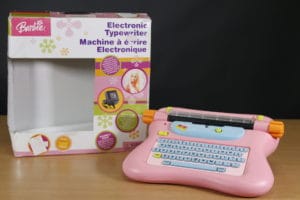
The e118
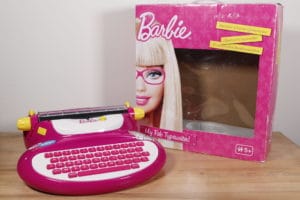
Each of these models utilized the exact same manufacturing processes and parts as the original Mehano machines, including the coding and decoding functions.
What Barbie failed to do with their newly procured toys was include any instructions regarding how to use the coding and decoding function or what to do if you accidently set the coding function off by hitting random buttons. This resulted in a series of complaints from customers who claimed their brand new Barbie typewriters were typing in “gibberish”. The failure to include these instructions with the e115 resulted in many of this model disappearing or being tossed. By the time the e117 was released, an insert on how to code and decode was included with the machine. Later models of the e117 and the e118 model did include these coding functions within the physical manual.
Why Mattel and Mehano did not include these with all Barbie branded models, we do not know. Many have speculated that it was because Mattel and Barbie did not feel that young girls would be interested in this function. This is, of course, just speculation and not representative of newer messages from the brand which push STEAM (Science, Technology, Engineering, Art, and Mathematics) based education for young women.
In addition to these machines being difficult to track down in one piece 20 years later, I’ve also had difficulties finding advertisements or information released by Mattel regarding these licensed products. After emailing Mattel’s support, I was informed of the following:
“Hi Sarah,
Thanks for reaching out to us about the Barbie typewriters. That might used to be tons of fun!
I tried tracking the product for you, but regrettably, the product was not listed in our system. It looks like this was one of the licensed products. We often allow other companies to use our name to manufacture products. This is called a “license agreement.” Although our logo appears on the item, it is another company that is the actual manufacturer. If there’s no Mattel logo on the product, that means it’s not manufactured by us.
I hope this helps. Thanks for being part of our Mattel family!
Kind Regards,
Mattel consumer services
Inspiring the Wonder of Play”
Mehano also had very little to say about their involvement with these coding concoctions:
Dear Mrs. Everett [author’s note, that would be my mom, not me],
Thank you for contacting us.
Since the product is longer discontinued, we hold no reliable information about your question. It could be that some models were made in Slovenia and some in China.
Thank you and kindest regards,
Key Account Manager”
In a following email, however, Mehano’s customer support was able to send me a product catalog from the late 90s/early 2000s featuring a manual Barbie C188 and an electric e115.
As an avid investigator, and possibly crazy person, I’ve continued my research into finding any sliver of information regarding the Barbie electric typewriter. One toy based YouTube channel did have a commercial from Greece featuring a Barbie toy phone and showcased, briefly, a Barbie C188. A strange article from the Belfast Telegraph did boast that an Irish gang utilized a Barbie toy typewriter to write their demands in 2013.
The National Cryptologic Museum based in Washington DC did fleetingly feature a Barbie Typewriter on display as part of their “Toys that Code” exhibit. I was interviewed as one of the only people who knew enough to talk about the Barbie machine at length alongside James Grime of singingbanana, another YouTube channel discussing the cipher capabilities of the machine.
As the Barbie typewriter foster mom of the typewriter collecting community, I’ve had the privilege of being sent four of my five Barbie machines: two manual, one e115, and two e117 machines. These toys do have their general issues, as do many products that were built to be played with and disposed of. There are no manufactures that make the specific ribbon cartridges that fit into these machines, and the cassettes themselves are not transferable between models. The ribbon itself is more like an IBM cellophane material, but cut down to an incredibly narrow size. There are no replacement parts of the internal workings of these machines. If you accidently use DC voltage on a European model, it’s toast and so are you.
The appearances of the bright Barbie-branded coding creations are few and far between across popular culture, but a resurgence in nostalgia based products has led to some interesting rabbit holes. And while there might not be much information on these specific models, the story of the emergence and downfall of the Barbie typewriter is an interesting one as it truly showcases how important it is for companies to understand their audience. For a collector, the Barbie electric toy typewriter is just eccentric enough to cause a problem. 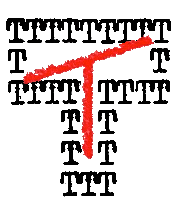
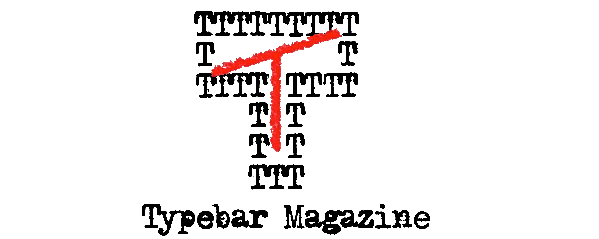
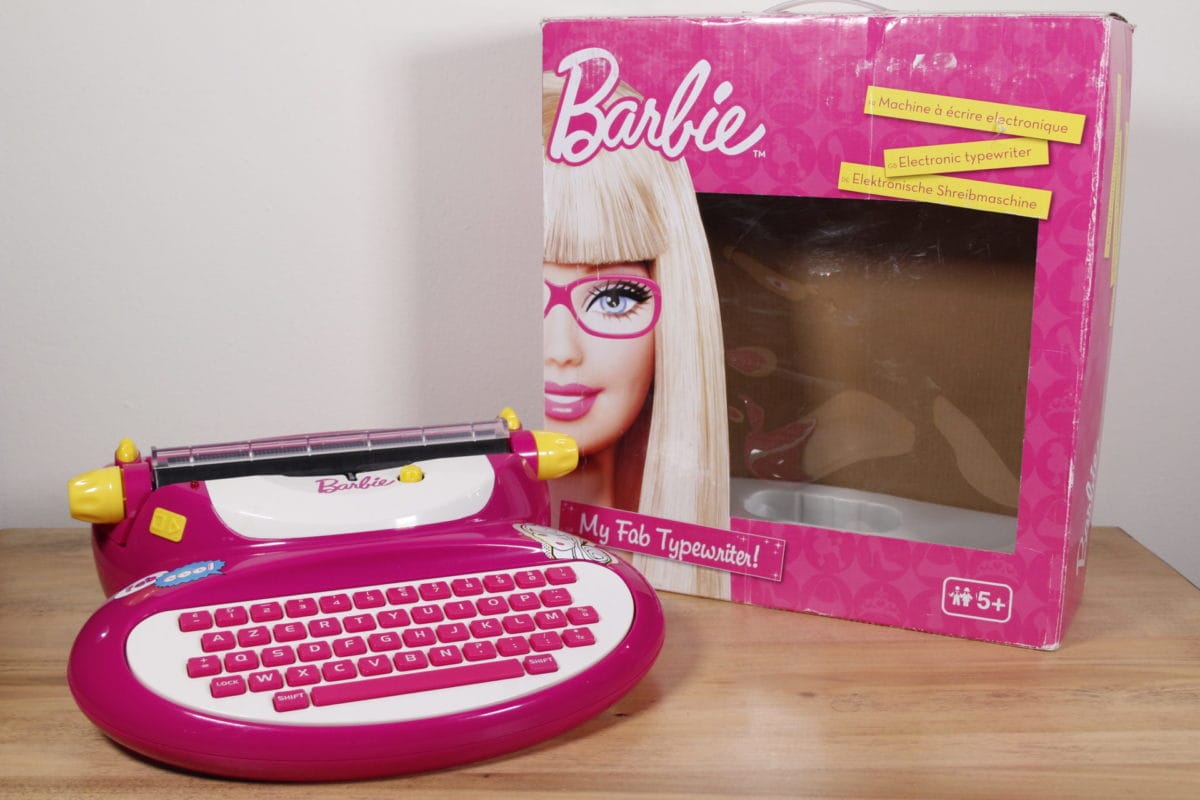
In my experience, kids love to have secret codes. I’m surprised they didn’t do more to call attention to the function. Kids might basically sell other kids on getting one to be in on the secret language.
I wonder if the Belfast gang Barbie typewriter is still locked in an evidence locker somewhere. Might be the ultimate collectible for fans of Barbie, typewriters, and the true crime genre.
Although, the true crime story would be more interesting if they had been using the code feature to communicate amongst themselves, leaving detectives stumped until they turned to just the right typewriter expert.
Great article!